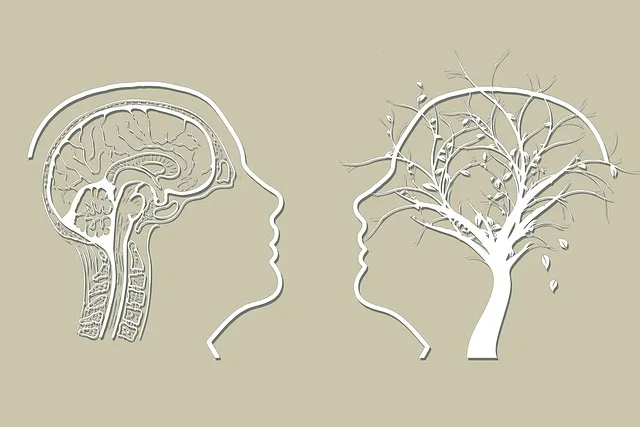The Kaiser Permanente Mental Health Facility in Centennial prioritizes patient safety through comprehensive harm minimization strategies. These include risk assessments, evidence-based practices like Inner Strength Development and Emotional Regulation techniques, and public awareness campaigns to reduce stigma. By teaching conflict resolution, self-esteem improvement, and resilience-building skills, the facility equips patients with tools for long-term recovery and daily life success. Leveraging technology for data tracking enhances risk assessment and enables tailored interventions, fostering a dynamic and collaborative environment for continuous learning and improved patient outcomes at the Kaiser Permanente mental health facility Centennial.
At Kaiser Permanente’s Mental Health Facility in Centennial, risk assessment is not just a procedure but a cornerstone of patient safety. This article explores how comprehensive harm minimization planning transforms this process into a proactive measure. We delve into understanding risk assessment as practiced at Kaiser Permanente Centennial, developing effective strategies for harm reduction, and implementing continuous improvement initiatives. By leveraging evidence-based practices, the facility ensures a safe, healing environment for all patients.
- Understanding Risk Assessment at Kaiser Permanente Mental Health Facility Centennial
- Developing a Comprehensive Harm Minimization Plan
- Implementation and Continuous Improvement Strategies
Understanding Risk Assessment at Kaiser Permanente Mental Health Facility Centennial

At Kaiser Permanente Mental Health Facility Centennial, risk assessment is a cornerstone of patient care and safety. It involves a comprehensive evaluation of potential hazards and their likelihood to cause harm, enabling healthcare professionals to implement targeted interventions. This process considers not just physical dangers but also psychological risks, such as emotional distress or relapses in mental health conditions. By employing evidence-based practices like Inner Strength Development, Emotional Regulation techniques, and Conflict Resolution Strategies, the facility ensures a holistic approach to patient well-being.
Risk assessment at Kaiser Permanente Mental Health Facility Centennial goes beyond mere identification of threats; it’s about empowering patients with tools for self-care and resilience. This includes teaching Conflict Resolution Techniques that foster healthier interactions and emotional balance. By integrating these strategies into care plans, the facility not only minimizes potential risks but also promotes long-term recovery and improved quality of life for its patients.
Developing a Comprehensive Harm Minimization Plan

At a Kaiser Permanente mental health facility like the one in Centennial, developing a comprehensive harm minimization plan is paramount to ensuring patient safety and promoting positive outcomes. This involves a multi-faceted approach that includes identifying potential risks, implementing evidence-based interventions, and fostering an environment of support and public awareness. One key strategy is leveraging Public Awareness Campaigns Development to educate both patients and the wider community about mental health issues, breaking down stigma, and encouraging early intervention.
Additionally, Mental Wellness Coaching Programs Development plays a crucial role in empowering individuals to manage their own well-being effectively. By focusing on Self-Esteem Improvement, these programs equip participants with coping mechanisms, resilience-building techniques, and enhanced problem-solving skills, all of which contribute to reducing the risk of harm. This holistic approach not only minimizes potential hazards within the facility but also equips individuals with the tools needed to thrive in their daily lives.
Implementation and Continuous Improvement Strategies

At a leading mental health facility like Kaiser Permanente Centennial, implementing effective harm minimization strategies requires a proactive and dynamic approach. Regular reviews and updates are essential to ensure that the plan remains relevant and responsive to evolving risks. One key strategy involves fostering an open culture where staff and patients alike actively participate in identifying potential hazards and proposing solutions. This collaborative environment encourages continuous learning and adaptation, allowing for the seamless integration of evidence-based practices such as Anxiety Relief techniques and Self-Awareness Exercises.
Additionally, leveraging technology can significantly enhance risk assessment capabilities. Digital tools enable detailed data tracking and analysis, facilitating a more nuanced understanding of emerging trends and patterns. By utilizing these insights, mental health professionals at Kaiser Permanente Centennial can proactively design and implement tailored interventions, further bolstering confidence in their ability to minimize harm and promote positive outcomes for all patients.
Risk assessment and harm minimization planning are essential components in ensuring the safety and well-being of patients at the Kaiser Permanente mental health facility in Centennial. By understanding the unique risks within this environment, developing comprehensive strategies, and implementing effective improvements, the facility can foster a secure and supportive atmosphere for all. These practices not only protect patients but also enable staff to deliver high-quality care, ultimately enhancing the overall experience at the Kaiser Permanente mental health facility Centennial.






